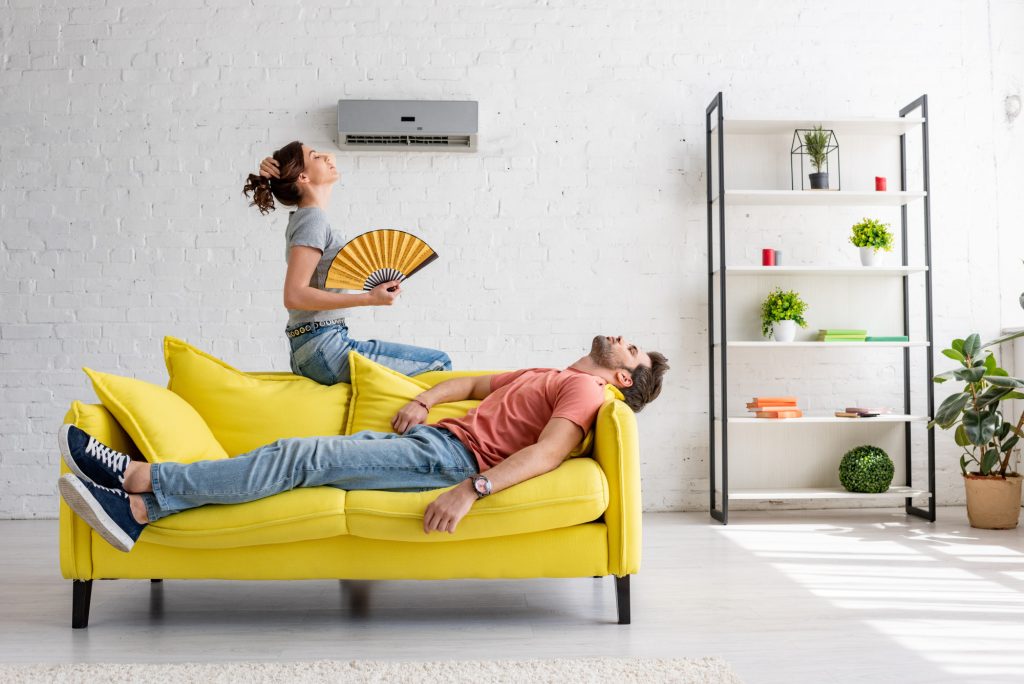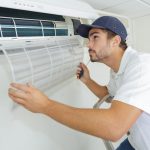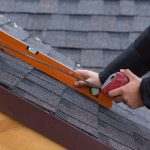8 Simple DIY Ways to Improve Your Air Conditioner Efficiency and Save Money
Did you feel the heat of rising global temperatures this summer? Whether you believe in the theory of global warming, or not, this summer set some records for hot temperatures worldwide.
Maybe you didn’t even notice the heat until you opened your monthly energy bill. If you’re like most people, you deal with the hot summer by turning up the air conditioner.
You can cool off and save on your bill by maximizing the performance of your cooling system.
Here are 8 simple things you can do to improve air conditioner efficiency in your home.
1. Schedule Regular Maintenance
Air conditioners are designed to give you reliable, efficient service for years. That doesn’t mean they don’t need routine checks and servicing.
Schedule routine maintenance at least once each year before the warm weather arrives. Depending on the age of your system and your climate, you may also need maintenance in the fall before temperatures drop.
Regular maintenance helps the system work efficiently. If you neglect your AC, eventually it will strain to cool your home.
Another benefit of regular maintenance is that you often catch small issues before they morph into costly service problems. An air conditioning repair technician performs a check of your entire system. They not only make sure your AC is operating efficiently, but they can also offer you tips to extend the life of your system.
How long has it been since you scheduled a routine heating and cooling system maintenance visit? Be honest! Whether it’s 1-2 years or maybe even never, grab your phone and make an appointment.
2. Change Dirty Filters
You may not think about your air filters often. Out of sight, out of mind, right? But swapping out the dirty for a fresh clean filter is one of the easiest things you can do to ensure air conditioner efficiency.
Don’t wait until you notice black dust blowing from your vents. Air filters trap particles and debris from the outside air. Dust and debris don’t only affect your lungs, it bogs down your AC system.
A dirty filter forces the entire air conditioning system to work harder to circulate air. The obvious result is poor efficiency.
At a minimum, you should change your air filters after the cooling and heating season. However, because there are a variety of filters available, check the manufacturer’s instructions for their recommendations.
3. Are Your Vents Clear?
If your home has central heating and air, it has openings designed to move air to and from your air conditioner and furnace. The generic term for these openings is vents.
Your supply vents push cool air out into your rooms. Return vents suck used air back into your ductwork and return it to the heating and cooling system.
One reason for poor AC efficiency is blocked vents.
Do a quick check of the vents in each room. Move dressers or couches that may block airflow. Check for piles of clothes or toys and move them away from vents.
When you cover vents, even a little bit, you choke off airflow. That increases pressure in your air ducts and results in a reduction in cool air flowing in the room.
Also, even though you don’t feel cool air coming from return vents, Make sure they’re clear as well so that used air can return efficiently to the system.
Keep all vents open even in rooms you don’t use often. Closing vents can tamper with your system’s cooling load. This can also reduce efficiency and comfort but also may damage your system.
4. Grab Your Vacuum
A clean air conditioner is an efficient air conditioner and all it takes is you and a vacuum cleaner.
You can vacuum and dust both the inside and outside unit in about an hour making this one of the easiest home maintenance tasks on your list. But before you start, do two things:
- Check the outdoor temperature.
- Turn off the power to your AC system.
If you’re cleaning the outdoor unit, make sure it’s at least 60 degrees F. It’s not that you can’t clean the condenser on a cooler day. If you combine a system check with the cleaning, 60 degrees is the minimum temperature for an accurate check.
Use the vacuum and suck up dead leaves, grass, and other debris. Then, using a soft brush attachment on the vacuum, clean the condenser fins. Be careful when cleaning the fins as they’re fragile and you can bend or crush them.
Next vacuum the inside unit. Open the blower compartment and vacuum any dust you can see. Hint: This is an excellent time to check your air filter.
5. Get a Programmable Thermostat
Would you like to save 10% a year on your heating and cooling bill? Turn your thermostat up 7-10 degrees for 8 hours each day.
If you don’t already have a programmable thermostat, install one today. Programmable thermostats let you set temperatures for various times during the day. This means you can program the thermostat so that it automatically lowers the temperature when you want it cool.
Try one of the new smart thermostats. They make programming even easier.
6. Don’t Let the Sunshine In
While this may sound counterproductive, especially if you enjoy natural light as a mood enhancer, too much sun on a warm day, may interfere with AC efficiency. Don’t let sunlight be your AC’s nemesis!
Heat enters your home through the windows. For better air conditioner efficiency, install blinds or curtains and keep them closed during the hottest times of the day. Pay special attention to windows that face the sun.
7. Take Advantage of Fans
You might think you don’t need fans if you have an air conditioner. The truth is fans can help improve AC efficiency.
Fans, especially ceiling fans help air circulate. If you can keep air moving throughout your home, it takes some of the burden from the cooling system.
The ceiling fan doesn’t cool the room, but it directs the already cooled air down on the room’s occupants. Fans act as a teammate for your heating and cooling system.
Make sure your ceiling fans are set to turn counterclockwise during the summer. This maximizes airflow.
8. Be Strategic About Landscaping
Landscaping matters when it comes to your air conditioner. While you may want to hide the unit from view, that may not be the best solution for maximum efficiency.
When planning your landscaping, make sure you keep a distance of 2-4 feet. between shrubs and the AC unit. The outside unit needs adequate airflow and plants and shrubs that grow too close may interfere.
Also, pay attention to the west and south sides of your home. Many homeowners enjoy using rocks as filler or have large cement or asphalt driveways on the side of the house. If you don’t also plan for shade, you’ll end up raising the temperature on those sides of your home.
There’s nothing wrong with building an enclosure for your outside unit, but follow the same rule you follow for shrubbery. Allow 2-4 feet on all sides for airflow.
Need More Help with Air Conditioner Efficiency?
Hopefully, we’ve inspired you with a few easy DIY ways you can improve air conditioner efficiency in your home.
If you have other questions, it’s a good idea to check with your heating and cooling technician.
You can also check out our archives for more DIY ideas that can save you money and help you run your entire home more efficiently. Thanks for reading!





